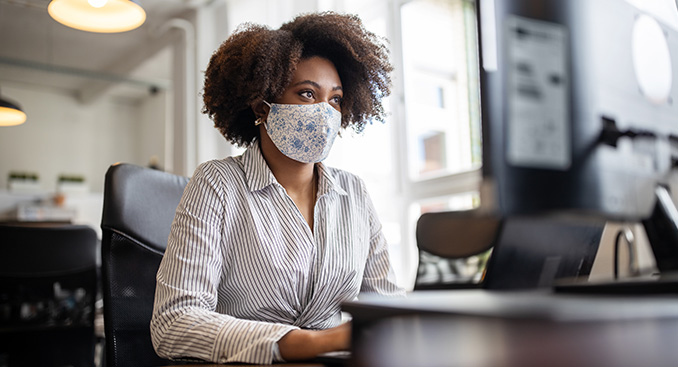Navigating a Safe Return to Business

As businesses reopen and people return to work, employers are adopting new practices to keep their workforce and customers healthy.
“It’s important that employers focus on the safety and cleanliness of their workplaces, both for the health of their employees and to help stop the spread of COVID-19,” said Malia Harper, MD, Medical Director of Executive Health and Workplace Wellbeing for TriHealth Corporate Health. “To assist with their efforts, we’ve put together some basic guidelines and additional resources for employers to help protect their employees’ health and well-being.”
Among many considerations in their downloadable Return-to-Work guide, TriHealth Corporate Health offers these tips:
- Fever/symptom screening
- Employees should self-monitor for fever or other symptoms of COVID-19, such as cough, shortness of breath or difficulty breathing, or new loss of taste or smell.
- Implementing a symptom and temperature screening process for all employees prior to entering the workplace helps to minimize the risk of spreading the virus and to ensure that those with symptoms of the illness do not infect their coworkers.
- Contact tracing
- If an employee tests positive, there should be an internal investigation to determine if there have been any close contacts with other employees starting 48 hours before the onset of symptoms.
- Close contacts are generally defined by the CDC as being within 6 feet and for 15 minutes or longer.
- If exposed coworkers had been socially distancing or wearing a face covering while near the infected employee, they may continue to work but should be self-monitoring closely for 14 days.
- Cleaning & disinfecting
- Wear disposable gloves to clean and disinfect.
- Routinely clean and disinfect frequently touched surfaces like workstations, doorknobs, light switches, phones, and keyboards.
- Use an EPA-registered disinfectant and educate employees on proper cleaning practices.
- Mask use
- Require employees to properly wear face masks on the job with exceptions for certain circumstances and conditions.
- Reserve surgical masks for health professionals.
In addition, consider providing safety and training refresher courses as appropriate and establishing a return-to-work program for employees who have been off the job or are returning after injury or extended illness, including COVID-19. Review policies related to fitness for duty and reinforce good ergonomic habits, such as proper lifting and carrying techniques.
It’s also important to address employees’ mental health and well-being. Employers should be aware that returning employees might feel overwhelmed by managing their return to work and potential upheaval in their personal lives. Employees also might grieve the loss of typical workplace activities. Dr. Harper encourages employers to remind their teams of mental health benefits and resources available through their company’s employee assistance program, such as TriHealth EAP, or insurance plans.
In addition to their free Return-to-Work guide, TriHealth Corporate Health offers multiple online COVID-19 resources, as well as other services, to help businesses foster a healthier workplace for employees and customers.